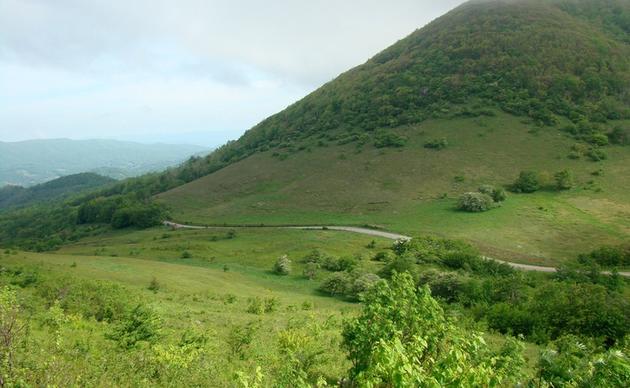Currituck Marshes-Pine Island IBA
“So I went, and in those magical moments of that March sunrise, I knew that this was a property that had to be saved for the ages.”
-- Donal C. O’Brien, Jr., former Board Chair of the National Audubon Society
Under the soft green canopy of live oaks, in the rustling grasses of Currituck Sound, and in freshwater pools teeming with birdlife, change is underway at the Pine Island Audubon Sanctuary. Tenacious birders wade and boat through marshes under the night sky, listening for the rattling calls of secretive marsh birds like the Black Rail. Center Director Robbie Fearn leads a group of beachgoers on a hike through a maritime forest, stirring up migratory warblers, while thousands of ducks feed in the marshes and impoundments. Audubon's management of the sanctuary embraces the heritage of northeastern North Carolina, while preparing for the changes the rising sea level will bring to this low-lying region.
The landscape
North Carolina’s Outer Banks have experienced rapid residential and commercial development in recent decades, but historically it was a wild, roadless area. Fortunately conservation groups have protected numerous wildlife sanctuaries on the Outer Banks that provide critical habitats for wildlife and refuges for people. Audubon’s Pine Island Sanctuary is is just such a place.
The 17,692-acre Currituck Marshes-Pine Island Important Bird Area (IBA) comprises an extensive system of marshes, creeks, channels, and open water, as well as the Pine Island Sanctuary. Currituck Sound is a shallow brackish water system located between the Outer Banks and the mainland in the northeastern region of North Carolina.
Northeastern North Carolina is particularly famed for its large number of wintering waterfowl as this region is positioned along the Atlantic Flyway at the intersection of numerous bird migration tributaries. The area is particularly important for a vast number of migrants that require habitats where they can quickly restore depleted energy resources.
Pine Island Sanctuary
After 30 years of ownership, Audubon assumed full management of the Donal C. O’Brien, Jr. Sanctuary and Audubon Center at Pine Island (generally referred to as Pine Island) in 2010. Pine Island is one of the last remnants of what was once a dramatic landscape along Currituck Sound, famous for waterfowl hunting and bass fishing, now an attractant for summer vacationers. The sanctuary includes marshes, bottomland areas, dry sandy areas, and upland maritime forests. Named for Audubon’s legendary board chair Donal C. O’Brien, Jr., Pine Island promises to be a hub for conservation activities for Audubon in the region.
Pine Island’s complex of brackish marsh, freshwater ponds, and maritime shrub thicket support a diverse array of birds and other wildlife that have otherwise been displaced by development in this northern Outer Banks region. The sanctuary’s habitats especially benefit wintering waterfowl, migrating songbirds, and summer wading birds. Black Duck, Northern Pintail, Green-winged Teal and other waterfowl use the sanctuary’s ponds and marshes, and many unusual birds have been observed on-site, including Scissor-tailed Flycatcher and Wood Stork. Waterfowl using the site also draw good numbers of raptors, including Peregrine Falcon and Cooper’s Hawk. Audubon Watch List species that have been documented at Pine Island include: Yellow rail, Black Rail, Clapper Rail, king rail, Nelson’s Sharp-tailed Sparrow, Saltmarsh Sharp-tailed Sparrow, and Seaside Sparrow.
Looking ahead at Pine Island Sanctuary
Pine Island is well suited to be a conservation center for Audubon North Carolina, combining direct habitat management with regional conservation initiatives and on-site educational programming. As part of the Atlantic Flyway, Pine Island will play a key role in creating a network of salt marsh landscapes that will be sustainably managed in order to persist in the face of sea level rise resulting from climate change and other threats. Protecting a network of salt marshes will help advance the recovery of salt marsh bird species whose Atlantic populations are confined to these habitats for at least part of their life cycle, including Clapper Rail, Black Rail, Saltmarsh Sparrow, and Seaside Sparrow. The conservation strategies to achieve this goal include protecting land, restoring habitat, and garnering public support of the importance of marshes.
Can I visit Pine Island?
1. A 3-mile long nature trail is open for the public to explore. The trail runs through maritime forest from the Pine Island Racquet and Fitness Club to the Sanderling Resort. There are two observation platforms that provide expansive views of the marsh and Currituck Sound.
2. Guided kayak tours are available April-September. Learn more.
How can I help Audubon's work at Pine Island?
Give a bird one more day, help protect an IBA by supporting Audubon North Carolina.
How you can help, right now
Donate to Audubon
Help secure the future for birds at risk from climate change, habitat loss and other threats. Your support will power our science, education, advocacy and on-the-ground conservation efforts.
Sign Up For Our eNewsletter
Keep up-to-date on all that happens with Audubon North Carolina's research, events and volunteer opportunities.




